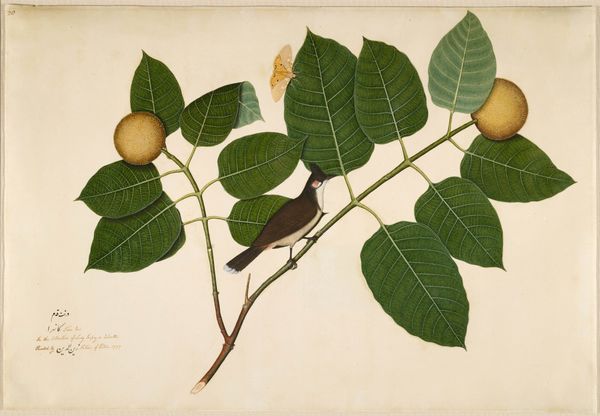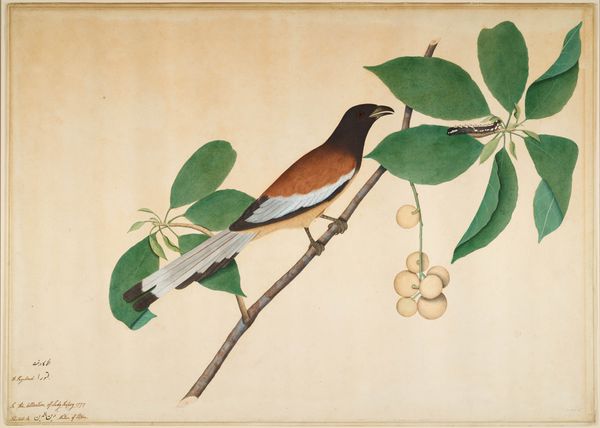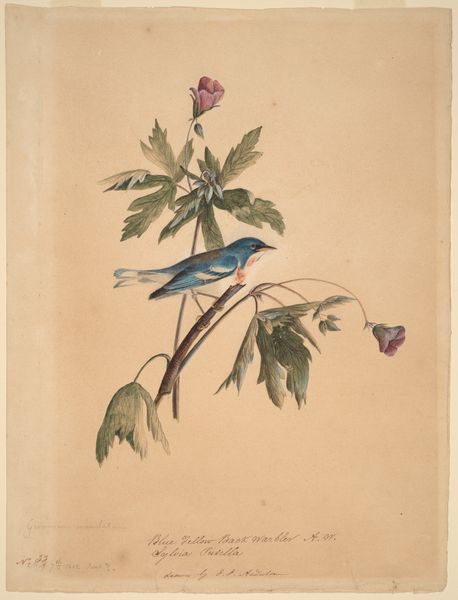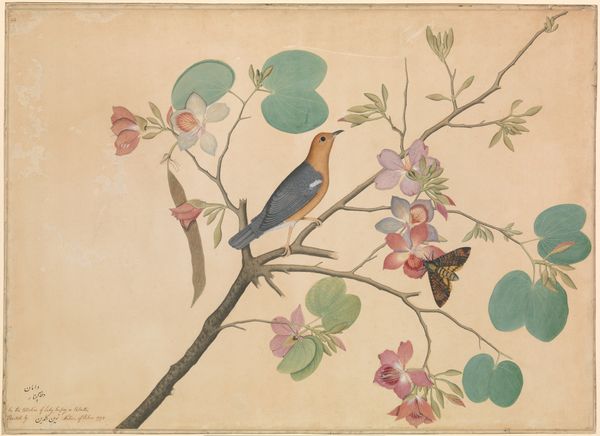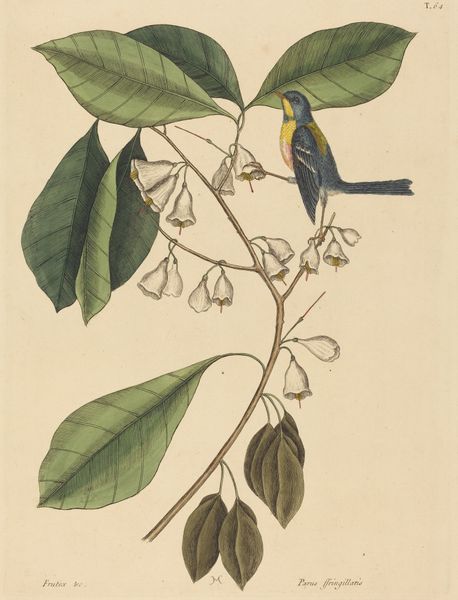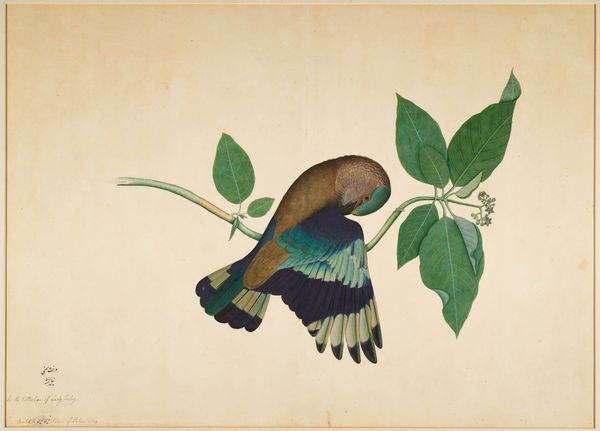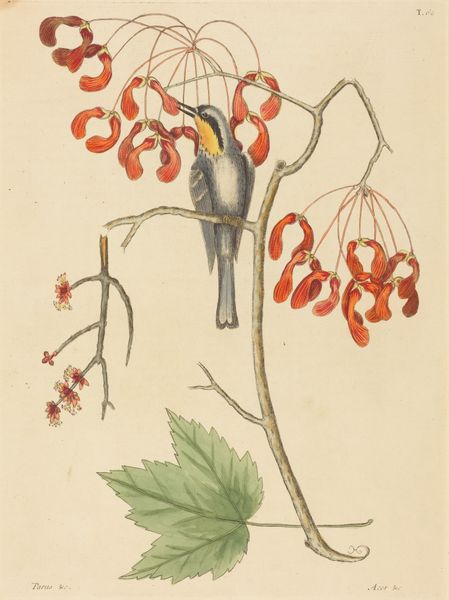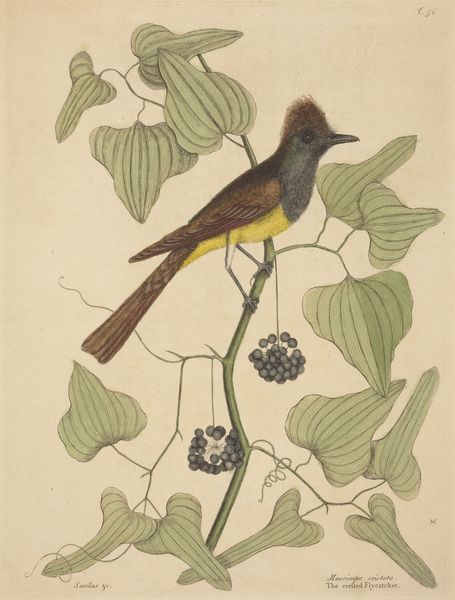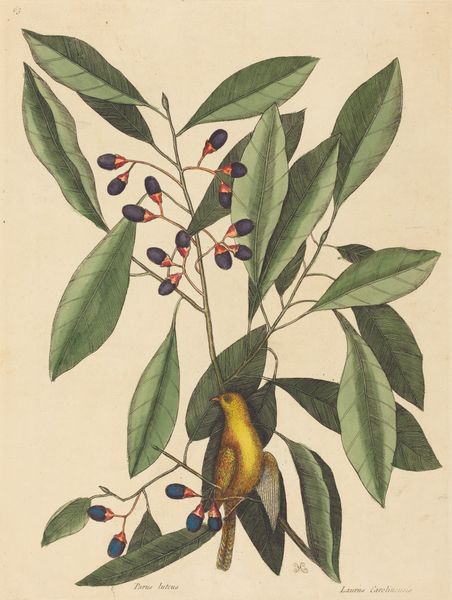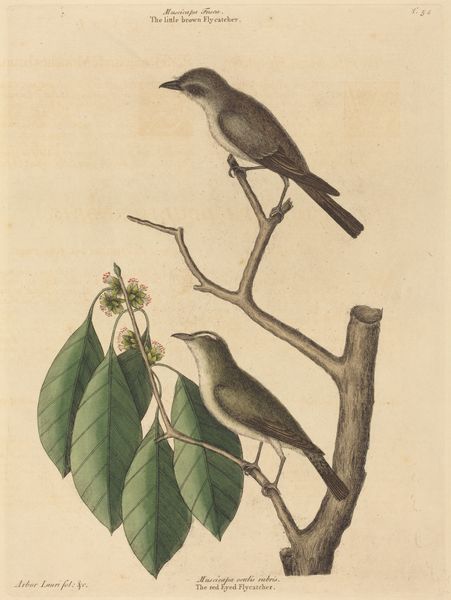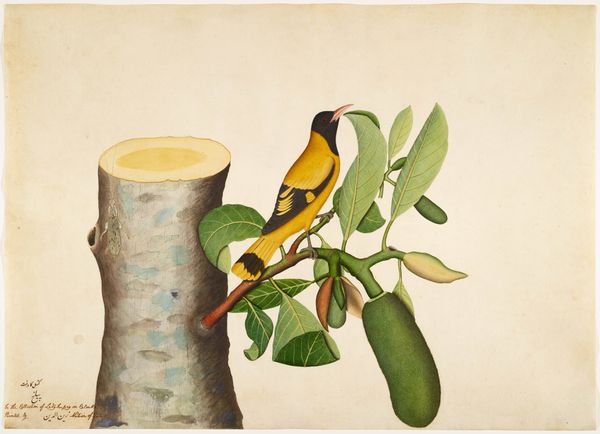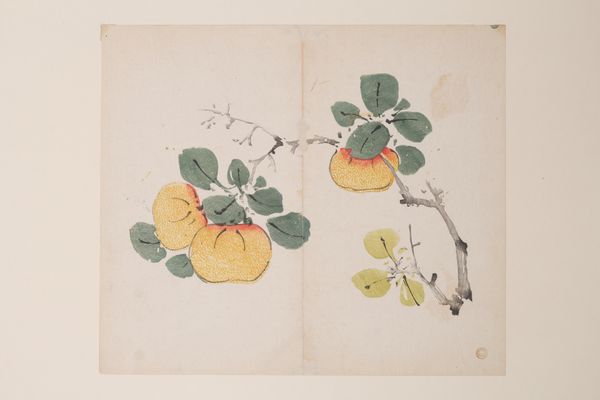
Oriental Magpie Robin with Katydid and Leaf Hopper on Monkey Jack Branch 1778
0:00
0:00
drawing, watercolor
#
drawing
#
water colours
#
asian-art
#
watercolor
#
watercolour illustration
#
botanical art
#
watercolor
Dimensions: 31 × 39 1/4 × 1 in. (78.74 × 99.7 × 2.54 cm) (outer frame)
Copyright: Public Domain
Editor: So precise, almost surgically rendered. What are we looking at here? Curator: This is "Oriental Magpie Robin with Katydid and Leaf Hopper on Monkey Jack Branch," a watercolor drawing completed in 1778. It's by Sheikh Zain al-Din, and you can find it here at the Minneapolis Institute of Art. Editor: Right. It feels... botanical illustration meets illuminated manuscript, that careful detail on the insects juxtaposed against this kind of dreamy, flattened space. Does that make sense? The background almost feels absent, like a stage. Curator: It absolutely does. These Company paintings, made for the British East India Company, occupy a fascinating space. On one hand, they reflect a Western desire for empirical documentation of the natural world. On the other hand, artists like Sheikh Zain al-Din brought centuries of training in Mughal miniature painting to the table, shaping that Western gaze. Editor: So it's a collaboration of sorts? The bird, posed just so... almost like a specimen but vibrant too. And the colours—the muted greens, that bright almost cartoonish orange fruit. There's something innocent about it. Is that crazy? Curator: Not at all. The vibrant color against the almost intentionally flat background really makes the subject jump out. It reflects both scientific recording and a specific kind of aesthetic appreciation. The East India Company were trying to display and represent new kinds of knowledge. Editor: A clash of cultures creating something entirely new... What did this have to "say" to its original audience? Was it just about cataloging exotica? Curator: I think it performed several functions. For the British, it satisfied a need for knowledge and control. It provided visual representations of the resources, the natural "wealth," they were extracting. But I suspect these images circulated differently in India, carrying their own aesthetic and cultural meanings. And maybe a sly comment or two. Editor: Hmm, a sly comment... I love that possibility. It complicates the neat little colonial narrative, doesn't it? And now, we’re looking at it and adding yet another layer. So the conversation continues. Curator: Precisely. These objects live multiple lives, speak in different registers. Perhaps their greatest power lies in the questions they provoke in us, across centuries and continents.
Comments
minneapolisinstituteofart about 2 years ago
⋮
The famed ‘Impey Album,’ to which these 11 natural history studies originally belonged, marks the beginning of a new school in the canon of Indian Painting: that is “Company Painting’’—so called after the British East India Company, which by 1757 had taken effective rule over the sub-continent—spanning from c. 1760-1880 and distinguished by native painters adapting to the needs of Colonial tastes. The result was an emergence of a distinctive Anglo-Indian aesthetic, which we see in the remarkable paintings here. Between 1777-1783, Lady Mary Impey, wife of the recently appointed Chief Justice of Bengal, Sir Elijah Impey, commissioned three artists: a Muslim, Shaik Zain ud-Din, and two Hindus, Bhawani Das and Ram Das (all of whom trained in a Provincial Mughal atelier in the neighboring city of Patna) to record the newfound wonders of her Calcutta aviary and menagerie.
Join the conversation
Join millions of artists and users on Artera today and experience the ultimate creative platform.
